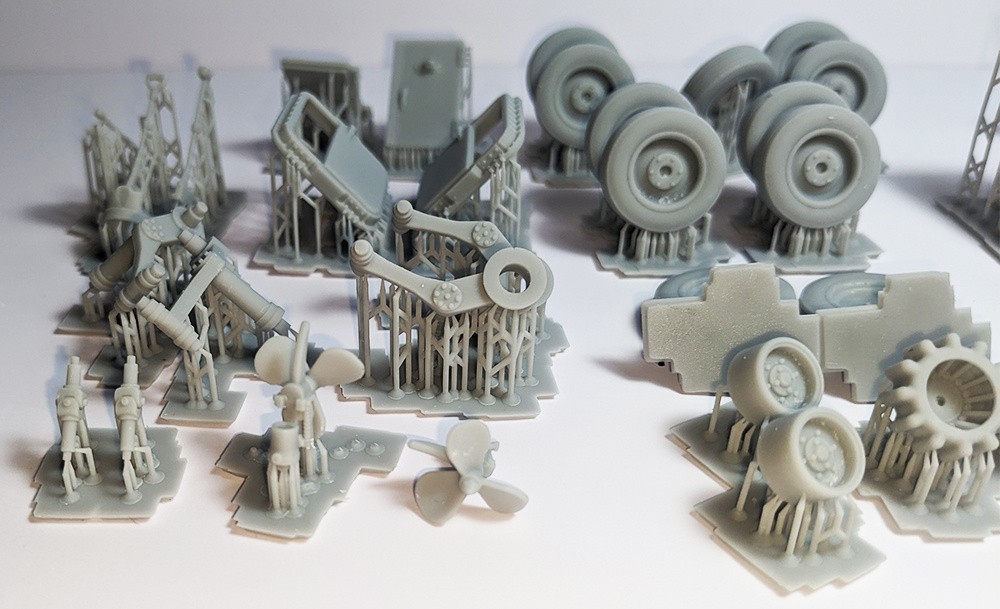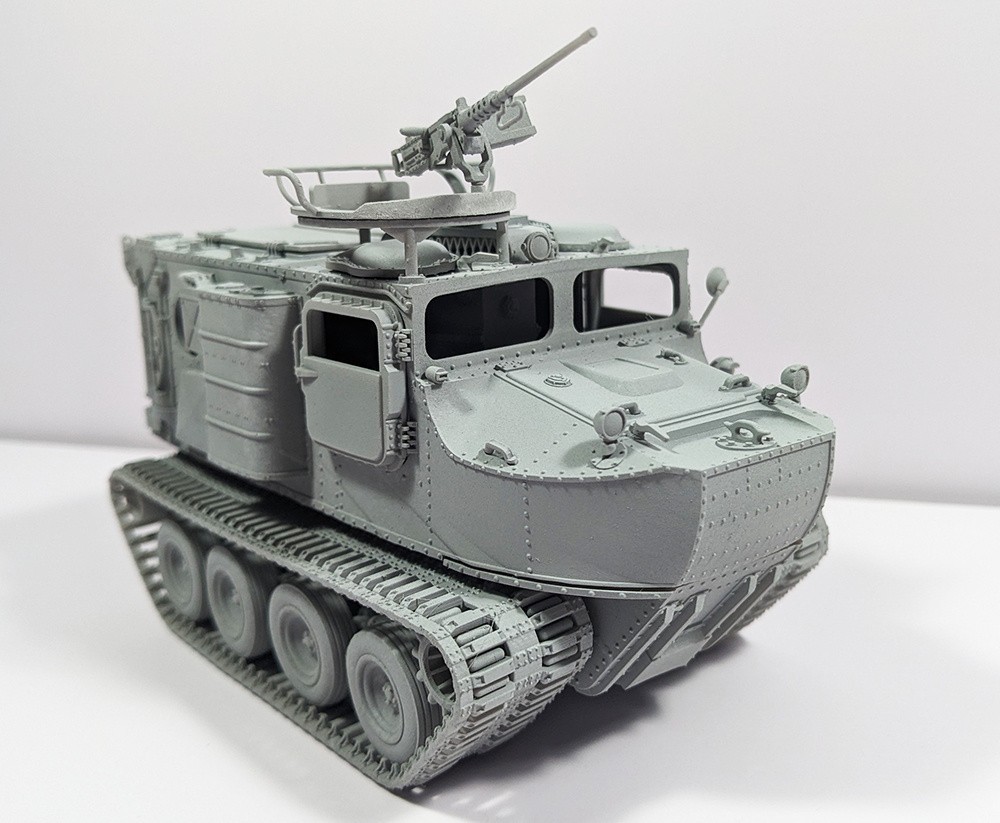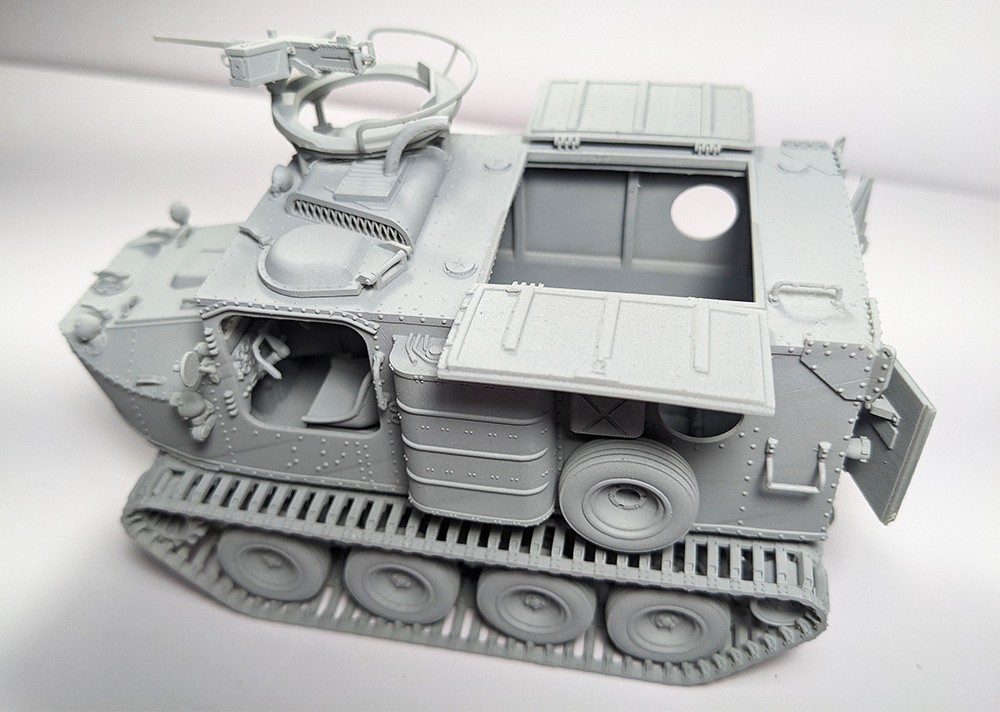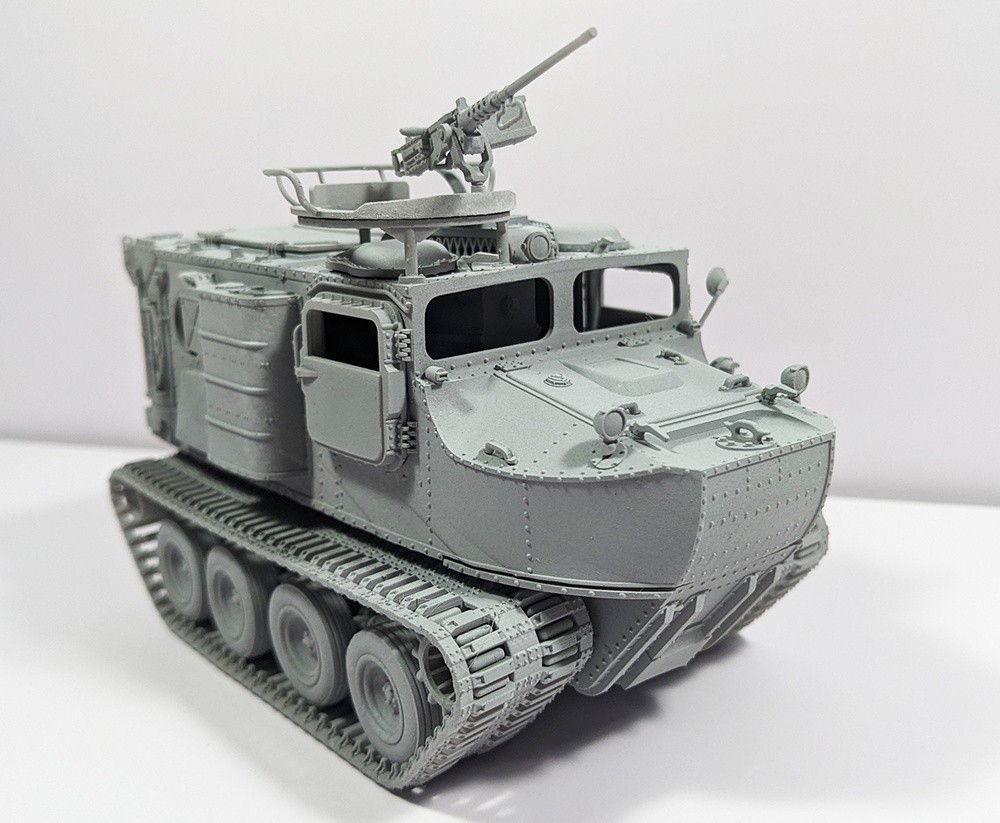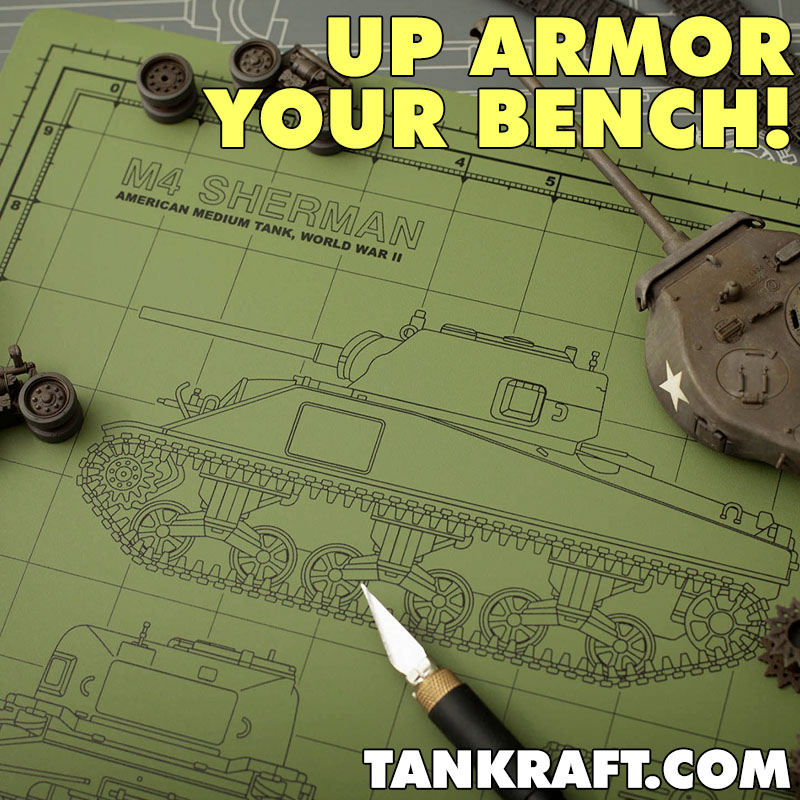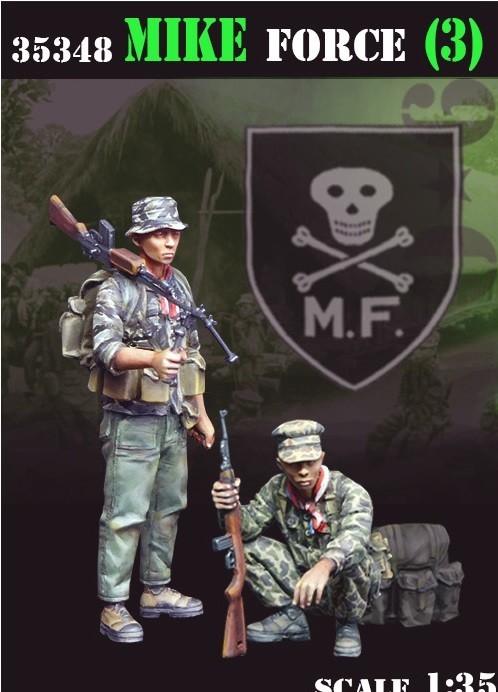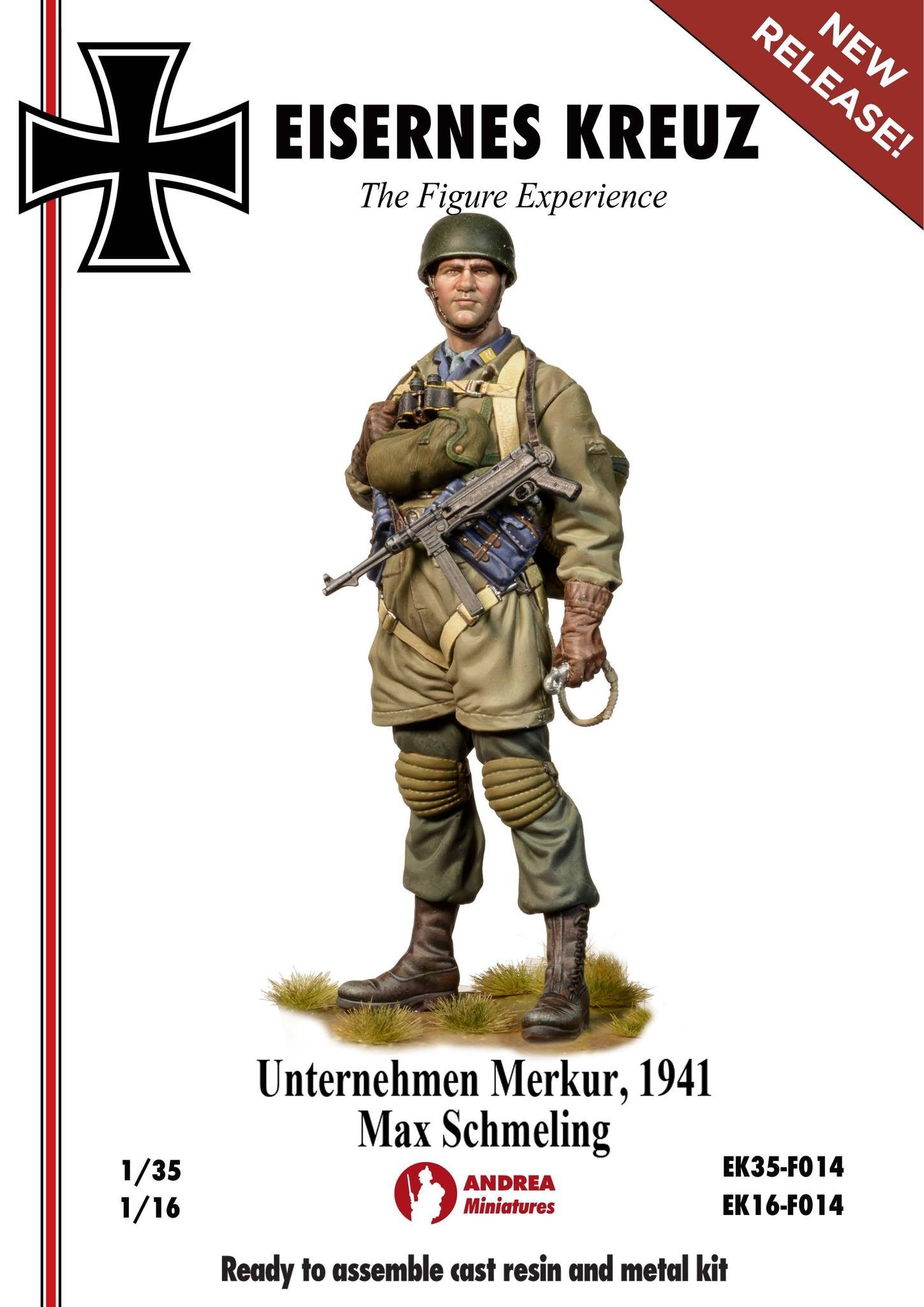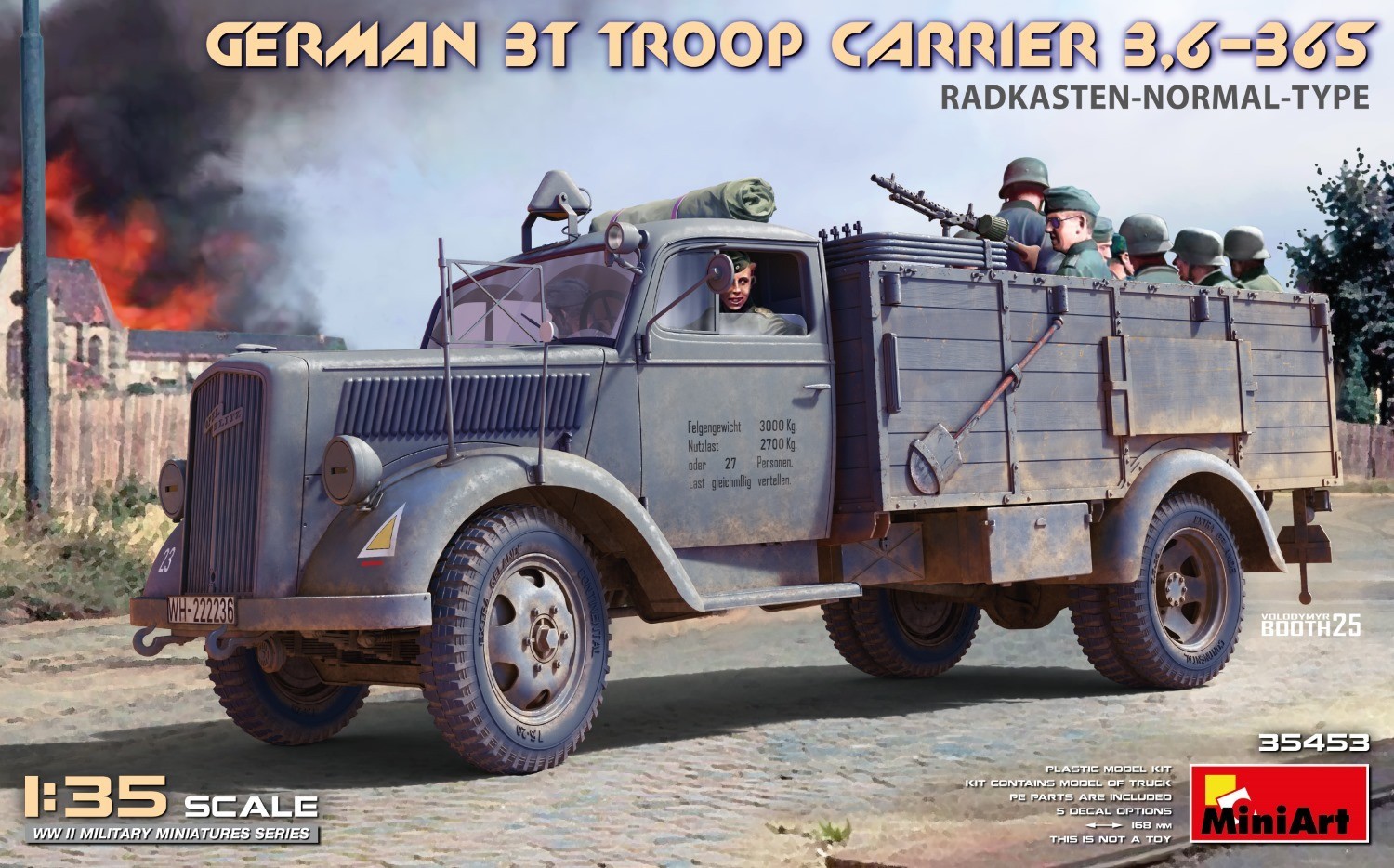Introduction
As World War Two wrapped up, the US military looked for a vehicle to replace the M29 Weasel. The Weasel was slow, lightly-armored, and not up to the needs envisioned for a global superpower moving forward. The Pontiac Division of General Motors designed the Otter, which had a closed cab and was amphibious from the get-go (the Weasel came in amphibious and non-swimming variants). The Army quickly lost interest in the project, but the Marines saw something more lovable, and the Otter served with them in Vietnam especially.
The Otter was lightweight thanks to an all-aluminum body, but which made it vulnerable to small arms fire. Employing a cab-over-engine design with an air-cooled four cylinder engine (originally intended for aircraft), the Otter could swim across rivers and rice paddies, and was generally quite useful in the terrain of Vietnam where it served beginning in 1965.
Hobby Link of Vietnam has released a 3D resin printed kit of the Otter, which has defied styrene up to now. The 3D process is emerging as the way for lesser-known vehicles to find their way to modelers when there isn't enough interest from conventional kit manufacturers.
Contents
Inside an unremarkable brown cardboard box is:
- 9 xeroxed pages of instructions
- two sets of molded-in-place tracks (typical of 3D-printed kits)
- multiple gray resin pieces
- upper one-piece hull
- one-piece lower hull + interior
- four sprues of clear resin windows
- 17 wheels
- one small sheet of waterslide decals for sharkmouths, unit markings, registration codes, etc.
The Review
The remarkable thing about the kit is that it exists at all.
While styrene companies have occasionally wandered into obscure vehicles, for the most part this is an AFV that only a small number of us will embrace. The printing is excellent, with crisp details like rivets, and a minimum of the ridges common on 3D-printed kits. An interior is present, and the suspension looks both detailed and yet simple to build: to that end, the tracks are molded in two runs, one for each side. I suggest a good deal of dry fitting before gluing anything down.
Regarding glue, this is a full resin kit, so CA or PVA glue will be needed, as ordinary styrene cement will not work. Modelers who have never build a resin kit would be well-advised to secure a small micro saw or saw blade for their hobby knife when removing the parts from their "trees." Another valuable suggestion is to remove parts while locating the assembly inside a larger plastic bag so that anything deciding to go flying will be contained. 3D printed resin can be quite brittle, and care should be taken not to stress any pieces. Warpage was minimal to non-existent, but in case you discover any, plunging the piece into boiling water for 10 seconds will soften it enough to be re-positioned.
The kits pieces are well-packed, with the delicate handrails in a separate inner sleeve, while the small bits are attached to their printing bases. My kit survived the trip from Vietnam and then from Wanamaker Hobbies intact. The vehicle will be at home in a variety of settings,
Markings
The kit includes a small sheet of decals with some unit badges (9MT), registration numbers in yellow, and two alternate sharkmouths for the front end. No colors are called out, but presumably postwar Olive Drab would be appropriate. Beware using photos from the Internet, as the majority seem to be restorations in US Army markings.
Conclusion
For those interested in the Vietnam War or oddball AFVs, this kit is a pricey ($100 retail), but excellent take in that direction. As modeling has evolved from styrene companies to resin conversions to nearly print-on-demand 3D resin, the opportunity for obscure or rare vehicles has increased. This kit is definitely welcome, and has been rendered well by Hobby Link. I look forward to building in in some swampy, watery setting and slathering it with mud and dirt.


